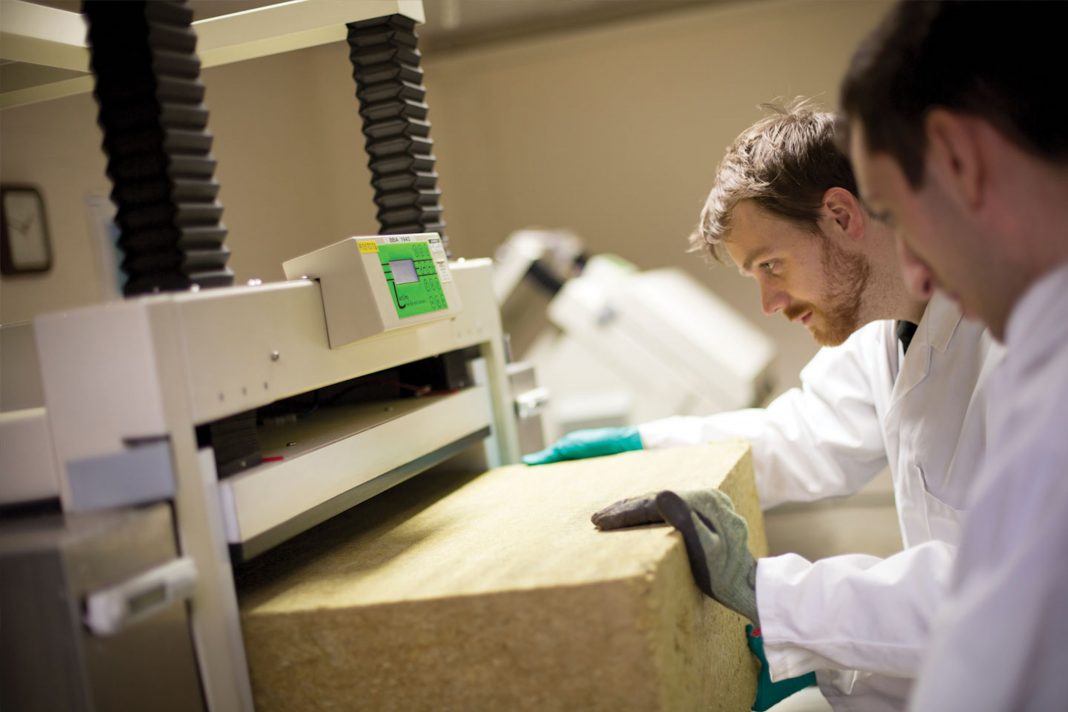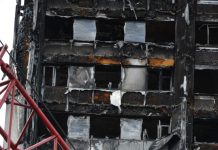Substituting a construction product or system in a building can lead to expensive problems further down the line if not done properly. Third-party certification can help ensure specifications are not compromised
Building components are subject to a series of rigorous approval tests that are regulated by international standards.
These regulations define parameters that must be taken into consideration when examining the safety and quality of construction products, determining mechanical capacities, structural integrity, durability, weather resistance, safety and capacity to resist manipulations and intrusions through thorough testing. In addition, products also need to be tested to check their durability, energy efficiency, aesthetics and environmental factors.
In short, safety and performance are of paramount importance and have, rightly, been the focus of much scrutiny over the last 18 months or so.
The specification process may be swayed by a raft of influencers, with price, performance, preference, contacts, supply chains and availability all playing their part in final decisions. And even when a specification has been agreed and signed off, it may be changed and a named product replaced with one considered to be an equal substitute.
Does this matter? We believe so and strongly encourage all involved in the build process – designers, specifiers, contractors, clients and even insurers – to be actively involved in which products make it to site; every component of every building needs to be thoroughly checked for durability, performance, safety and installation limitations. New construction products and systems are continually being introduced and, again, they need to be safe, reliable, fit for purpose and installed correctly.
Also consider that products are tested as an individual item, as part of a system and as part of the building as a whole. Changing one component can affect how the building/structure behaves in differing circumstances and by failing to test against all factors the entire build process, including insurance, specification and sustainability, can be impacted.
It sounds basic enough but not all new (or even existing) products may tick all four boxes. And if the first you find out about it is post-installation, the ramifications can be costly.
When specifications are drawn up, or amended, all aspects of the building products or systems need considering, including physical properties, performance levels and installation guidance. This is a time-consuming process in an industry where time is usually in short supply and very expensive. Informed decisions need to be made quickly.
This is where third-party building products and systems certification can step in and take the strain, pooling all the relevant regulatory information, documentation and test results into one information source that details salient points about the product/system and takes a view (pass or fail) on its suitability for its intended purpose. Such a certificate will accurately describe a product or system, its possibilities and – equally importantly – its limitations.
However, as with building products, it pays to understand a little about the certification process and the body issuing the certificates (note they are not approvals; certification organisations do not approve products for use). It is a highly technical field that calls for much experience and rigour.
Certification takes into account all relevant UK Building Regulations, additional non-regulatory information, verification of technical specification, design and installation considerations and production surveillance.
The BBA stands alone in also conducting random product sampling during factory visits. The composition of samples is cross-checked against their published and certificated specification to bring complete clarity to the process.
At the BBA, we perform numerous tests to support our certificates and also rely on third-party testing from UKAS-accredited facilities. Weather tightness, fire performance, adhesion, mechanical strength, durability and maintenance are among many others that may be assessed to ensure the certificates produced are clear in how products should be used. In addition to this, the resulting certificate may list the relevant Building Regulations, its compliance with Construction (Design and Management) Regulations, NHBC etc.
Technical information should lay out what the product is made of, how it is manufactured, if the system has constituent parts, how it is delivered to site and how it should be stored. It is therefore of the utmost importance that specifiers, contractors and architects look for a detailed list of testing and investigations carried out and ensure the guidance on installation, use and maintenance is adhered to.
In-house product testing enables certification bodies to be fully confident in their decisions. Take External Wall Insulation Systems (EWIS). Testing to ETAG 004, ETAG 17 and MOAT 22 for use on masonry, steel and timber framed walls will look at durability when subjected to hygrothermal cycling of heat/rain and heat/cold; performance when subjected to UV light; thermal conductivity, mechanical testing; water vapour permeability/transmission and water absorption; windloading; dimensional stability; compressive strength and long-term thickness reduction.
Not only do these tests provide extra research and development, helping to ensure the warmth and comfort of building occupants, they also afford manufacturers of External Thermal Insulation Composite Systems (ETICS) and EWI products accreditation.
Circling back to the matter of product compliance, certificates carry all the relevant information required to assist with quick decisions, either onsite, at the merchant counter or during the design phase, making the specification process quicker and more efficient. Select an accredited product and the research is already done. Should a spec need changing, referencing a replacement product’s certificate can more easily and quickly flag up issues. In essence, a third party has done the leg work, produced the paperwork and is, ongoing, monitoring the product or system, giving users independent assurance and a very clear paper trail should issues arise.
As such, linking certification with Building Information Modelling (BIM) is a natural progression. From our perspective, the aim is now to provide designers and specifiers with sensible, meaningful and quality information about certified products. This initiative brings synergy to the process, encouraging certificate holders to offer object assurance to designers and modellers, who benefit from checked and validated specification information to ensure their designs are correct and workable.
Conclusion
Establishing a product’s fitness for use can take time and require a number of separate certificates. Having these certificates pulled together into one reference point and combined with information about relevant regulations, standards, codes of practice, CE Marking etc is of major benefit, allowing them to satisfy themselves that all levels of fitness for use have been met. So when specifications are being drawn up or changed, better decisions can be made more quickly, saving time, money and effort
Wendy Ajuwon
Head of Marketing
Tel: +44 (0)1923 665300
Twitter: bbaguru
LinkenIn: british-board-of-agrement














